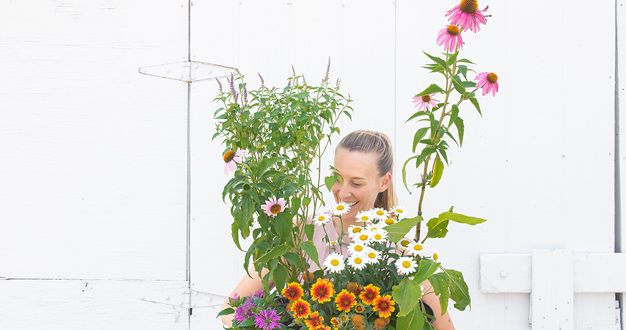
Some houseplants like to wander. And all that lush growth is great until you find yourself stepping on tendrils or removing a wayward vine from its neighbor’s container. Or maybe you just want to take advantage of this growth habit to create a unique vertical sculpture for your home. That’s where a trellis can help. These open structures bring welcome organization to your plant’s vigorous growth. Here’s a look at how to bring a trellis and plant together.
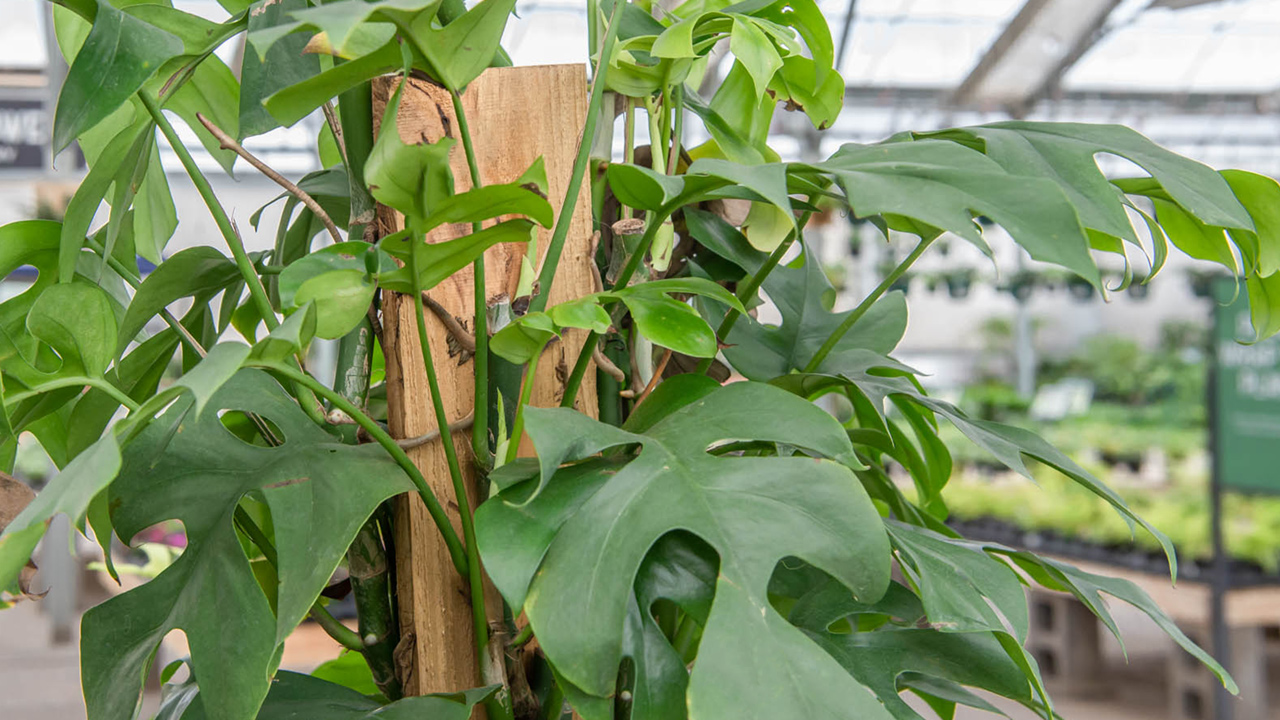
Reasons for a Trellis
In their native tropical forests, some understory plants figured out that if they were going to find enough light to survive, they would have to climb for it. Using wrapping tendrils, grasping nubs, or strong aerial roots, these vining plants cling to and climb on taller, upright plants in their search for adequate light.
In your home, that climbing habit may call for some vertical support. A trellis not only keeps the foliage from growing in random and sometimes intrusive directions, it also gives you a chance to enjoy seeing how your plant would grow in its natural environment.
A trellis also brings your plant’s beautiful foliage up to your line of sight where you can better appreciate its color and texture. And depending on the trellis, you can use its shape and style to create some interesting visual pieces for your home too.
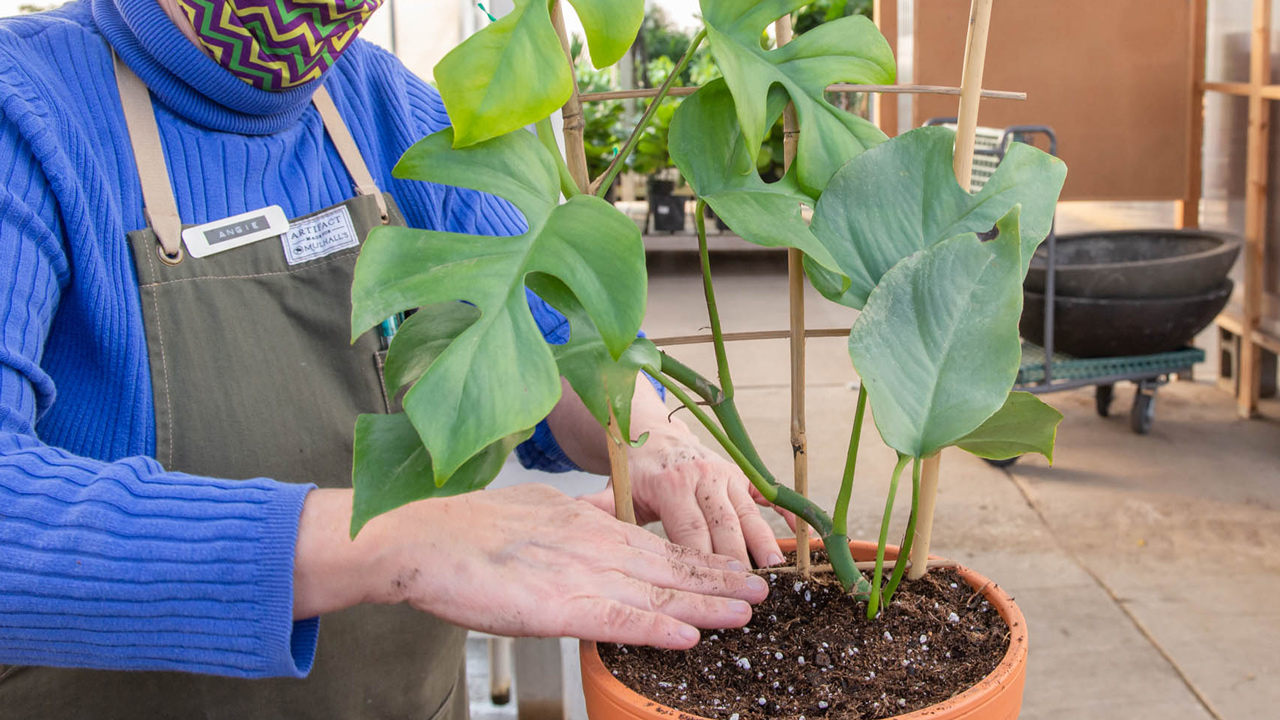
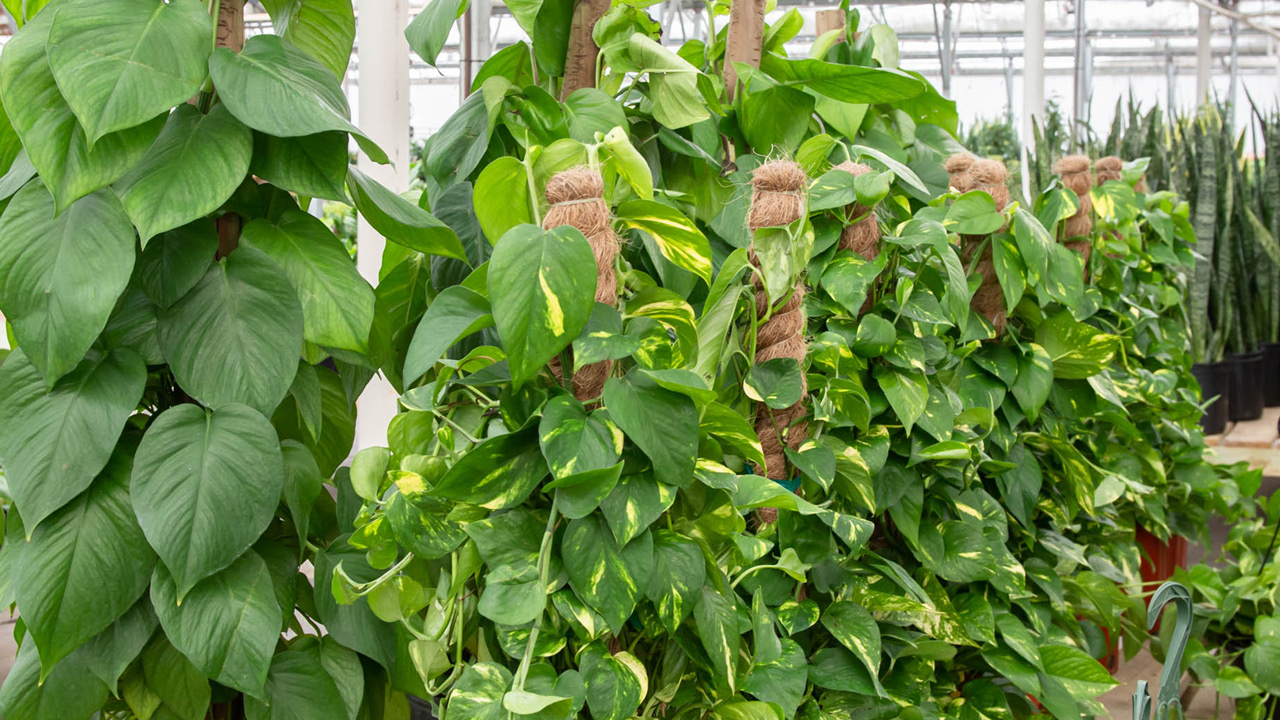
Choosing a Trellis
A trellis can be made of different materials, but the type and style you choose will depend on the plant and your vision for the finished project. Is the trellis simply there as a support structure or do you want the plant to follow the trellis’s form and create a predetermined shape? It’s up to you! But at the very least, it’s a good idea to find a trellis that has nice long prongs or supports at the bottom that sink deep into the soil to help the trellis provide good support.
And if you’re trellising something big – like a healthy monstera – make sure the trellis is sturdy and stable enough to support those hefty vines. In fact, for plants like monstera that produce strong aerial roots, you might consider a moss-covered totem for the plant to climb instead. The aerial roots will seek out the moisture in the moss and attach to the totem by themselves.
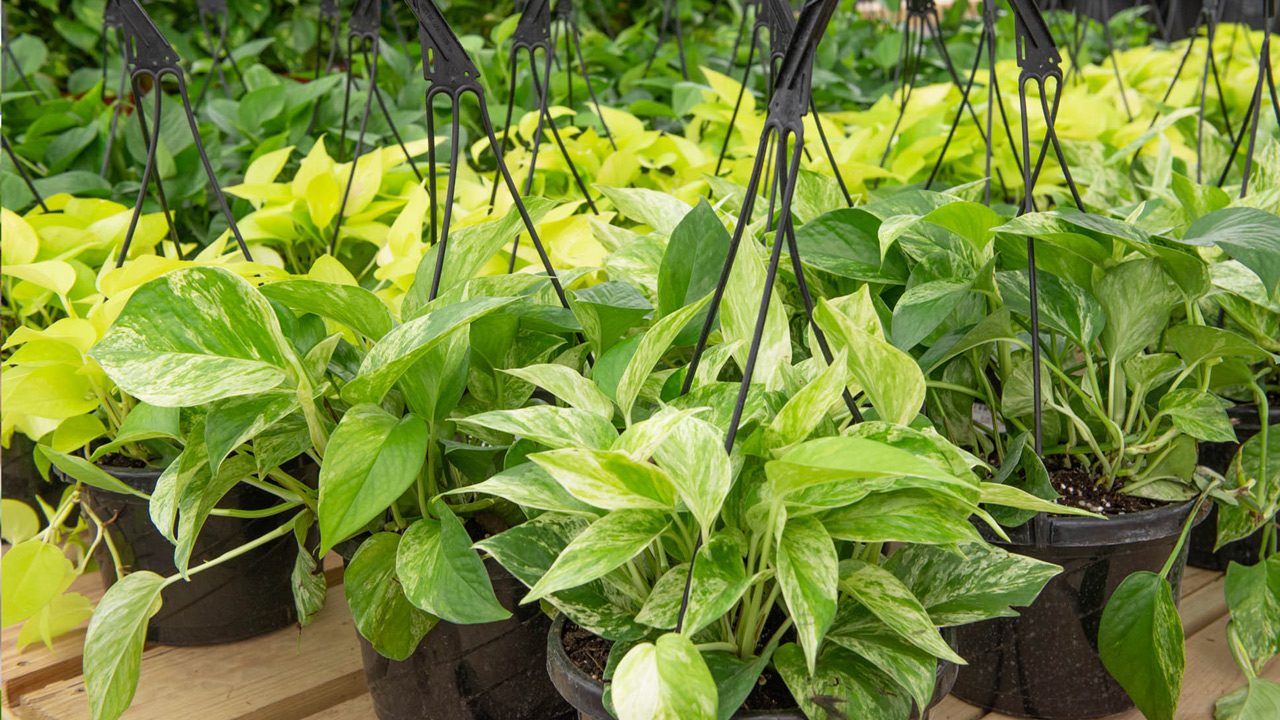

Plants that Climb
Great plants to train to a trellis include vining or draping plants like Monstera deliciosa, Monstera adansonii, pothos, Philodendron cordatum, hoya, and ivy, among others. Some plants, like Hoya pubicalyx for example, are natural climbers and will readily cling to and climb a vertical support. Others, like pothos, may need a little more help to get started.
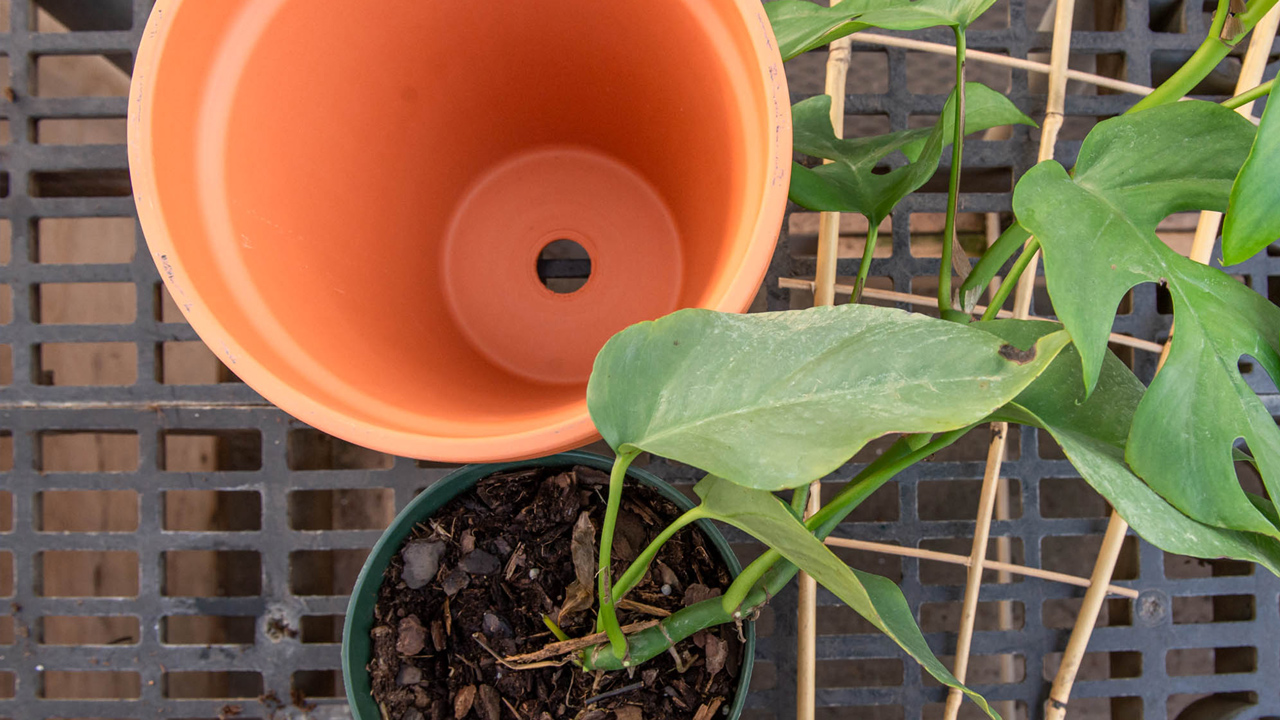
Getting Started
The easiest way to introduce a trellis to a plant is to start with a potted plant, then add the trellis to the container. If the plant is brand-new and still in its plastic grow pot, you might consider repotting the plant into a heavier container that’s an inch or two wider to create more room for root growth and more stability for the trellis. If the plant is an established member of your collection, and it’s in need of a bigger pot anyway, go ahead and repot it first. But, if there’s still plenty of space for new roots, you can skip right to adding the trellis.
Take Time to Untangle
Before bringing in the trellis, it’s a good idea to examine the vining foliage and gently untangle each of the separate stems – a little like giving the plant a very gentle comb-out. This step will make it easier to attach the foliage to the trellis.
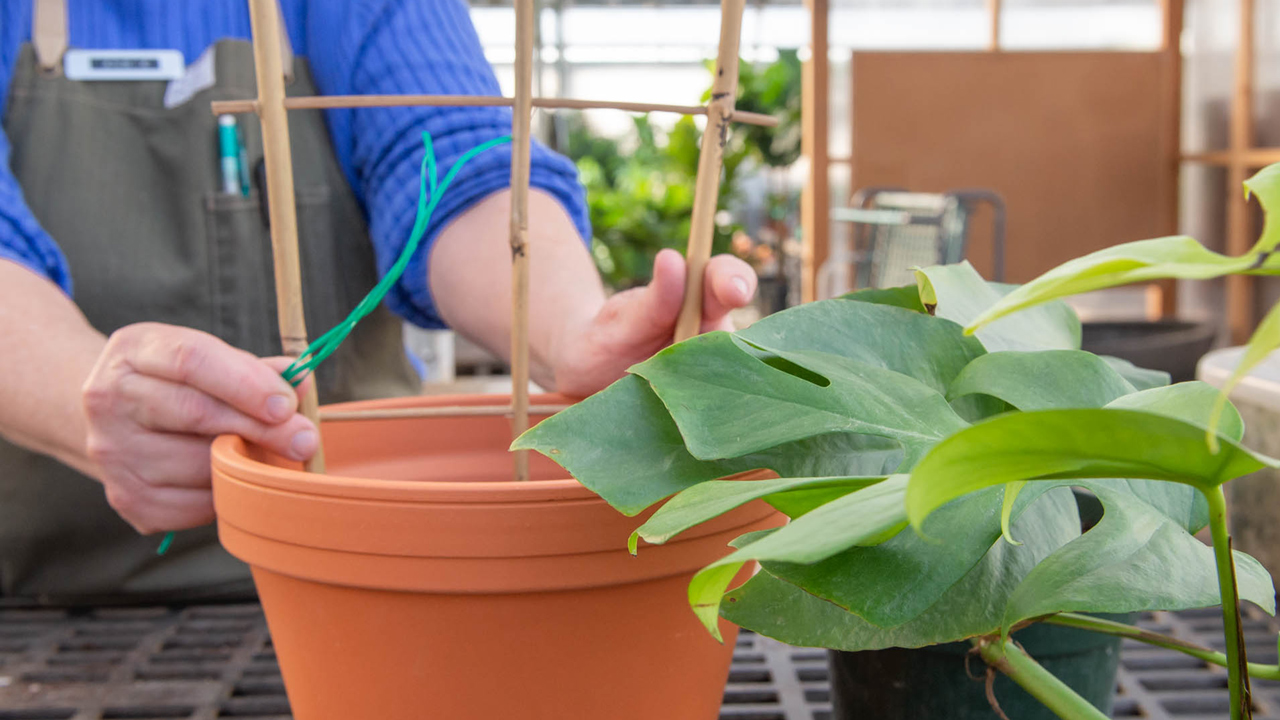
Set the Trellis
Next step is to decide where the trellis will sit in the pot in relation to the plant. The trellis may sit right in the middle of the pot or slightly to the back, depending on how you want it to look and sometimes, where the shape of the plant will allow it to fit. Once you know where you want to place the trellis, hold it upright and then push the supporting legs or prongs down gently into the soil as far as they’ll go. You may have to move the foliage around a little to get the trellis situated where you want it.
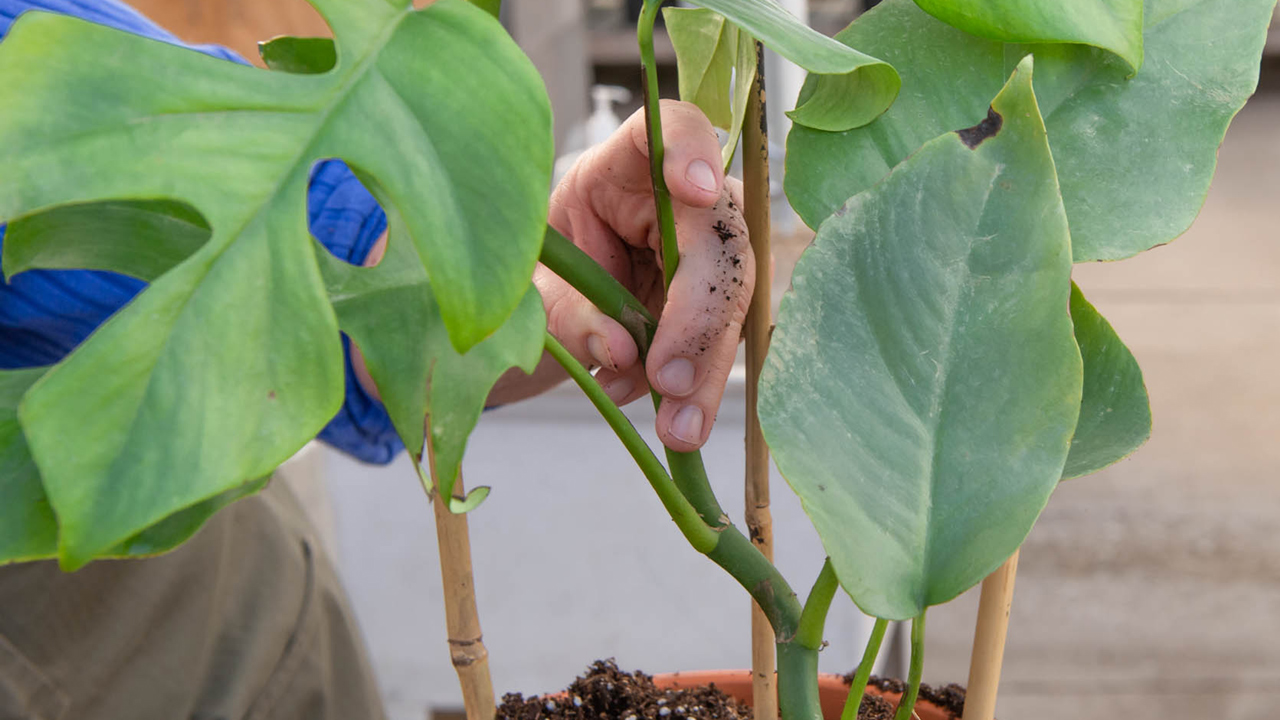
Guide the Plant
To train the plant onto the trellis, gently lift each of the stems and maneuver it onto the trellis structure, using the natural curve and direction of its growth as a guide. For plants that are less eager to cling to the trellis, you may need to gently attach the branches to keep them where you want them. Whether you use fishing line, plant ties, or mini clips, be sure the tying material isn’t too tight and allows the stems some room to grow.
Caring for Your Trellised Plant
As with any potted plant, make sure your trellised plant gets the amount of light and moisture it needs to thrive. With its foliage now reaching high and finding more light, it may begin taking up more water than it used to, so keep an eye on the soil and increase how often you water, if needed. And during the growing season, regular fertilizer will help your plant grow lots of new foliage to climb the trellis too.

We’re Here to Help
A trellis might be just what your plant needs to really shine – and keep those wayward tendrils out of your business too. If you’re looking for a trellis or a plant to attach it to, come visit the Greenhouse. We’re always happy to answer questions, talk through the process, or just talk about the wonderful world of houseplants with you.


